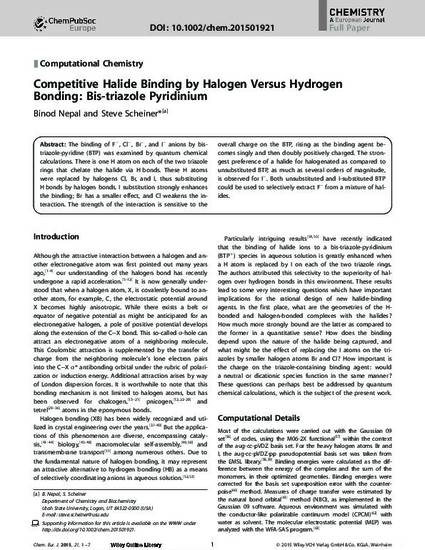
The binding of F-, Cl-, Br-, and I- anions by bis‐triazole‐pyridine (BTP) was examined by quantum chemical calculations. There is one H atom on each of the two triazole rings that chelate the halide via H bonds. These H atoms were replaced by halogens Cl, Br, and I, thus substituting H bonds by halogen bonds. I substitution strongly enhances the binding; Br has a smaller effect, and Cl weakens the interaction. The strength of the interaction is sensitive to the overall charge on the BTP, rising as the binding agent becomes singly and then doubly positively charged. The strongest preference of a halide for halogenated as compared to unsubstituted BTP, as much as several orders of magnitude, is observed for I-. Both unsubstituted and I‐ substituted BTP could be used to selectively extract F- from a mixture of halides.

This is the peer reviewed version of the following article: Nepal, B., Scheiner, S. I. (2015). Competitive Halide Binding by Halogen Versus Hydrogen Bonding: Bis-triazole Pyridinium. Chemistry – A European Journal, 21(38), 13330–13335. http://dx.doi.org/10.1002/chem.201501921, which has been published in final form at https://doi.org/10.1002/chem.201501921. This article may be used for non-commercial purposes in accordance with Wiley Terms and Conditions for Use of Self-Archived Versions.